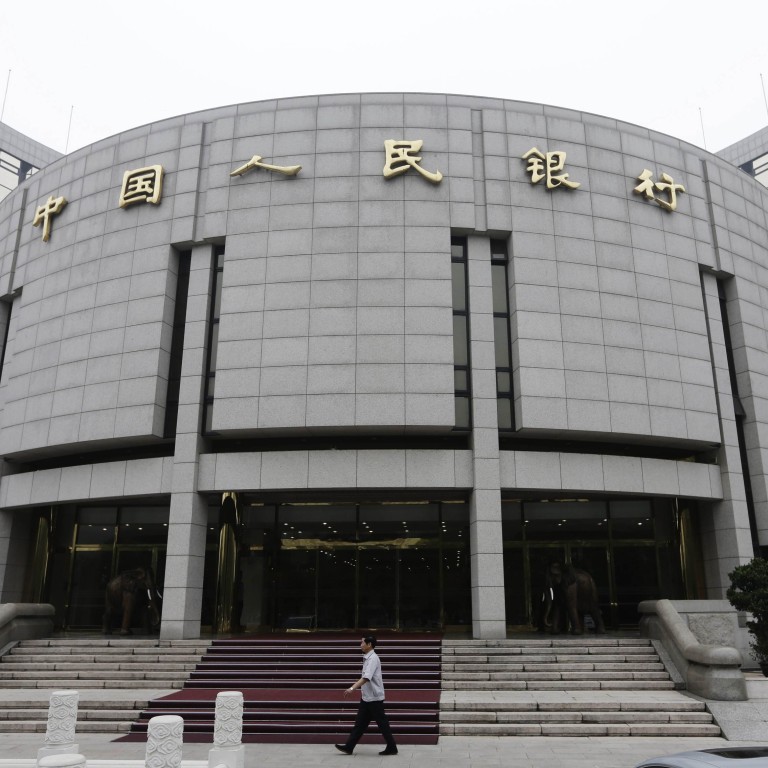
Beijing unlikely to cut banks' buffer
Despite slowing economy, lenders' required capital reserves likely to stay high, analysts say
Even as the mainland economy shows signs of weakness, the central bank is unlikely to cut banks' reserve requirement ratio in the near term to spur growth, a tool it has put on hold for almost two years, some economists say.

A Reuters report, citing unnamed sources involved in internal policy discussions, said the People's Bank of China was prepared to cut the amount of cash banks must keep as reserves if economic growth fell below 7.5 per cent and inched towards 7 per cent.
Since May 2012, the reserve requirement ratio at major mainland banks has stayed as high as 20 per cent. But several noted researchers told the that Beijing's pursuit of the administrative tool to adjust the availability of funds was unlikely in the near term as the authorities were working on more market-driven initiatives towards a less regulated system.
"The economy is surely facing downward pressures. China's monetary policy may be fine-tuned to protect growth," said Zhu Baoliang, a vice-director at the Economic Forecasting Department of the State Information Centre, a government think tank. "However, there's no need to adjust the reserve ratio given that market liquidity is neither too tight nor too loose."
Exports fell by the most last month since the global financial crisis, while manufacturers' surveys also showed a dimmer outlook. But money supply has stayed consistent, with M2 up 13.3 per cent at the end of last month.
The central bank has been adjusting liquidity mainly through open market operations in the past year. On Tuesday, the PBOC sold 100 billion yuan (HK$126 billion) worth of 28-day repos to absorb liquidity.
Li Xuesong, a senior researcher at the Chinese Academy of Social Sciences, echoed Zhu. "The conditions for cutting RRR aren't ripe," Li said. "The government is focusing more on improving investment structure and aims to reduce intervention in the market."
He also said a failure to meet the official economic growth target, at about 7.5 per cent this year, might not be a big concern as Beijing aimed to improve the quality of growth. "My understanding is that 7 per cent is the authorities' new psychological bottom line," he said.
Starting a new cycle of cuts to the reserve requirement ratio cuts would go against Beijing's call for a less regulated financial system. As part of that plan, PBOC governor Zhou Xiaochuan has said interest-rate controls may be fully relaxed in one or two years.

